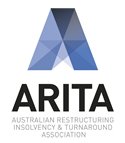What information should a liquidator supply to the court to have his or her remuneration approved? On the other side, those opposed to the amount of remuneration must “settle on particular aspects of the liquidators’ conduct which can be queried”. This judgment from Western Australia on 11 February 2015 considers some issues.
Judgment – Remuneration of Provisional Liquidator – WA

RE PNP PACIFIC PTY LTD; EX PARTE STRICKLAND & HURT as Liquidators of PNP PACIFIC PTY LTD [2015] WASC 49 (11 February 2015)
CORAM : MASTER SANDERSON > HEARD : 6 NOVEMBER 2014 > DELIVERED : 6 NOVEMBER 2014 > PUBLISHED : 11 FEBRUARY 2015 > FILE NO/S : COR 147 of 2014
MATTER : Application for approval of liquidators’ remuneration pursuant to s 504 of the Corporations Act 2001 (Cth) > EX PARTE > KIMBERLEY ANDREW STRICKLAND as Liquidator of PNP PACIFIC PTY LTD First-named Plaintiff > DAVID ASHLEY NORMAN HURT as Liquidator of PNP PACIFIC PTY LTD > Second-named Plaintiff.
Catchwords: Liquidation – Application for approval of remuneration – Turns on own facts. Legislation: Corporations Act 2001 (Cth), s 449E (7)
________________________________________________________________
1 MASTER SANDERSON: This was the plaintiffs’ application for approval of remuneration. The application was issued on 6 August 2014. It was supported by an affidavit of the second-named plaintiff, David Ashley Norman Hurt, sworn 29 May 2014, and a further affidavit of Mr Hurt, sworn 6 August 2014. Mr Sean Damian O’Reilly, a secured creditor of the company, appeared and opposed the making of the order for remuneration. I granted Mr O’Reilly leave to file any affidavit in opposition to the liquidator’s remuneration claim by 16 September 2014.
2 The matter came back before the court on 6 November 2014. The plaintiffs were represented, but Mr O’Reilly did not appear. I indicated to counsel for the plaintiffs no affidavit from Mr O’Reilly had been received and I would make orders approving the remuneration in terms of the originating process. I indicated I would give written reasons for my decision. On 16 December 2014 I read short oral reasons into the transcript and published these reasons both to the plaintiffs’ solicitors and to Mr O’Reilly. Regrettably, due to an administrative oversight, I did not take into account an affidavit of Mr O’Reilly which had been filed on 7 October 2014. I have now had the opportunity to consider that affidavit and have concluded that even with the benefit of Mr O’Reilly’s affidavit, the plaintiffs’ application should be approved. These reasons deal shortly with why, in these rather unusual circumstances, I would approve the plaintiffs’ remuneration.
3 The way in which the remuneration of liquidators, provisional liquidators and other company administrators is to be determined was set out by the Full Court of this court in Venetian Pty Ltd v Conlan (1998) 20 WAR 96. It is worth setting out again the regime mandated by the court. It is as follows (103 104):
Ordinarily, to commence the proceedings, the provisional liquidator will provide the court with a statement of account reflecting in appropriate itemised form, details of the work done, the identity of the persons who did the work, the time taken for doing the work, and the remuneration claimed accordingly. The statement of account should also reflect in appropriately itemised form the expenses incurred by the provisional liquidator, accompanied where necessary by voucher proof. Sufficient detail should be provided to enable the court to determine whether the disbursements were reasonably incurred and that the amounts claimed are reasonable.
The statement of account should be verified by affidavit. When the remuneration claimed involves work carried out by the provisional liquidator and his staff, the verifying affidavit need state merely that the work described in the statement of account was done by the provisional liquidator or under his personal supervision, and that from personal knowledge or from the records kept by the provisional liquidator or his firm, or from some other appropriate source, he believes that the information contained in the statement of account is correct. When disbursements are claimed, the affidavit should verify that they were incurred and, if necessary, why they needed to be incurred.
In Re Solfire Pty Ltd (In liq) (No 2), Shepherdson J said (at 1,164):
‘In my view, when a provisional liquidator seeks to have his remuneration determined by the court he should provide a document not dissimilar in form to the bill of costs in taxable form provided by a solicitor to his client … He should identify the person or persons and the grade or grades of the person or persons engaged in the particular task concerning the provisional liquidation, he should identify that task and dates on which time was spent on it, the amount of time spent on it and he should identify the relevant rate, according to the grade of the person or persons performing the work. I also consider that he should require the person performing the work to keep reasonably detailed diary notes and time sheets which documents should be open to inspection by persons entitled to see them.’
In our opinion, however, it is, with respect, unnecessary to lay down an absolute rule, in such detailed terms, concerning the statement of account to be provided by a provisional liquidator. It may well be that in a particular case information particularised as suggested by Shepherdson J would be appropriate. In other cases less detailed information may be required. Every case depends on its own circumstances. But the overriding principle remains: sufficient information must be provided to the court to enable it to perform its function under s 473(2).
If the Master were to be satisfied that the statement of account was sufficiently detailed to enable the remuneration to be determined, but there were objections to the account, special directions should be given in regard to the mode in which the account is to be taken or vouched. The procedure set out in O 45 should as far as possible be adopted. If, for example, the objector challenges whether a particular item of work was in fact done, or whether the person alleged to have done the work spent the time alleged in doing it, it may be necessary for the provisional liquidator to call direct evidence establishing the correctness of the allegations made: see generally Gava v Grljusich (unreported, Supreme Court, WA, Full Court, Library No 970492, 19 September 1997).
Notice should be given of the points on which the provisional liquidator will be crossexamined (if crossexamination is allowed). The notice of objection should be supported by affidavit. Crossexamination of the provisional liquidator and the objecting party may then occur. But care should be taken to follow the admonition of Sir Robert Megarry VC in Computer Machinery Co Ltd v Drescher (at 1386), namely: ‘It would not be right to allow anything resembling a trial of the action to take place in the guise of an argument on costs’.
4 What is anticipated by this regime is a twostage process. The practice is grown up of liquidators swearing an affidavit and attaching to that affidavit copies of the timesheets used to calculate remuneration. In addition, the liquidator will provide a brief description of the role of each person for whom a charge has been made, and the rate at which the time has been charged. I then consider the timesheets and all related material and form a prima facie view as to whether the charge is reasonable.
5 In this case the approach taken by the liquidators was slightly different. They produced a remuneration report pursuant to s 449E(7) of the Act. A copy of that report is annexure DH11 to the first affidavit of Mr Hurt. The remuneration was approved at a meeting of creditors held on 23 April 2012. The liquidators then undertook further work and prepared a further remuneration request report which appears as annexure DH13 to Mr Hurt’s affidavit. It is this report seeking an amount of $25,419 which formed the basis of this application. The report was not approved by a meeting of directors.
6 The first report itself begins by setting out a ‘Schedule of Hourly Rates and General Guide to Staff Experience’. For instance, under the classification ‘Director’ there appears a heading ‘Description’. It reads as follows:
Chartered accountant (or equivalent) and degree qualified with 9+ years (approximately) of experience. Able to autonomously lead complex insolvency appointments.
7 The hourly rate specified is $510. There then follow a number of categories down to the final category of ‘Clerical’. Such persons are charged at $110 an hour. There is then a heading ‘Liquidators’ Disbursements’ which sets out the way in which disbursements are charged. For instance, ‘Printing’ is charged at 30 cents per page. There then follows a heading ‘Remuneration Methods’ and it is said that the liquidators have charged on a time cost basis. There is a further subheading ‘Other Creditor Information on Remuneration’. Reference is made to a number of publications providing some guide as to the way in which liquidators charge generally.
8 The main part of the report appears under the heading ‘Schedule of Liquidator’s Anticipated Tasks and Estimated Remuneration for the Period 5 April 2012 to Finalisation of the Liquidation’. The total shown is $40,230, and it was this amount that was approved.
9 The second report was in a slightly different form. Once again, the hourly rates of staff were set out and it is said charging was based on a time cost method. There then appears a heading ‘Tasks Undertaken by the Liquidators and Time Costs for the Period 5 April 2012 to 30 June 2013’. By way of example as to how these matters are set out, appearing below is the first of a number of discrete boxes setting out what was done in relation to particular matters.
|
Task area
|
General description
|
Includes
|
|
Assets
9.9 hours
$2,804
$311 per hour
|
Stock, Plant and Equipment
|
- reviewing asset listings;
- correspondence and liaison with auctioneers and potential buyers;
- obtaining valuations; and
- tasks associated with realising assets.
|
|
Debtors
|
- reviewing the trade debtor position.
|
|
Other assets
|
- tasks associated with realising other assets.
|
|
Funds in CS Legal trust account
|
- tasks associated with realising funds in CS Legal Trust account;
- correspondence and liaison with solicitors;
- tasks associated with obtaining court order.
|
10 There is a final heading ‘Summary of the Liquidators’ Time Costs for the Period 5 April 2012 to 30 June 2013 by Personnel Level and Task’. By way of example, Mr Hurt is described as ‘Associate Director’. His hourly rate is $467. He is said to have spent 6.7 hours working on the liquidation at a total cost of $3,129. That dollar figure is then broken down further. For instance, under ‘Assets’, as set out above, Mr Hurt is said to have incurred an amount of $94 by way of costs.
11 As with every single case I have looked at over the past almost 17 years since Venetian was decided, I was satisfied, prima facie, the charges claimed were justified. It is difficult to see how in any circumstance a different conclusion can ever be reached. All a liquidator can ever do is set out in broad detail what was done in the course of the liquidation and the hourly rate charged. There is no way I could, by looking at the broad description of the work done by Mr Hurt and his hourly rate, assess whether or not the charge is reasonable. Really, the first stage of this two stage process is a waste of time. Of course, if it were the case the material before the court was manifestly inadequate because there were no timesheets, the hourly rate was not specified, or the individuals who did the work were not identified, then the claim would fail. But that is a wholly different thing from requiring a preliminary assessment of the entitlement to remuneration.
12 In any event, having undertaken in this case a preliminary assessment of the material, I was satisfied, prima facie, the plaintiffs were entitled to compensation. It was then a matter of considering the affidavit of Mr O’Reilly. It is somewhat difficult to distil from the affidavit the nature of Mr O’Reilly’s complaint. It would appear to amount to Mr O’Reilly being dissatisfied with the time invested by the plaintiffs in the liquidation. At par 51 of his affidavit he says:
My professional opinion is that the amount of hours that could be substantiated in this matter is less than 50 hours.
13 In a following paragraph he goes on to offer a breakdown of how long various tasks would take. For instance, ‘Creditors’ is suggested to take four hours. Mr O’Reilly also complains about the charges of liquidators generally without reference to this particular liquidation. Mr O’Reilly was also not satisfied there was a need for investigation of the company’s affairs. If an investigation was actually undertaken, he says it was not comprehensive.
14 The difficulty with Mr O’Reilly’s affidavit is its generality. It does not settle on particular aspects of the liquidators’ conduct which can be queried. To refer again to the Venetian decision, Mr O’Reilly does not challenge whether a particular item of work was done or whether a particular person specified actually did the work. Based upon the general affidavit filed by Mr O’Reilly, there was no way I could have directed the liquidator to file further affidavit material. That would have required each and every one of the persons who were associated with the liquidation to swear an affidavit saying what they did, when they did it and why they did it. It is that sort of exercise which, on any approach to a review of remuneration, is to be avoided.
15 Accordingly, I was not satisfied the affidavit of Mr O’Reilly gave rise to any matter about which the liquidators had to provide further information. I am satisfied the approval of that remuneration was proper and appropriate. I made orders accordingly.
___________________________________________________________________








